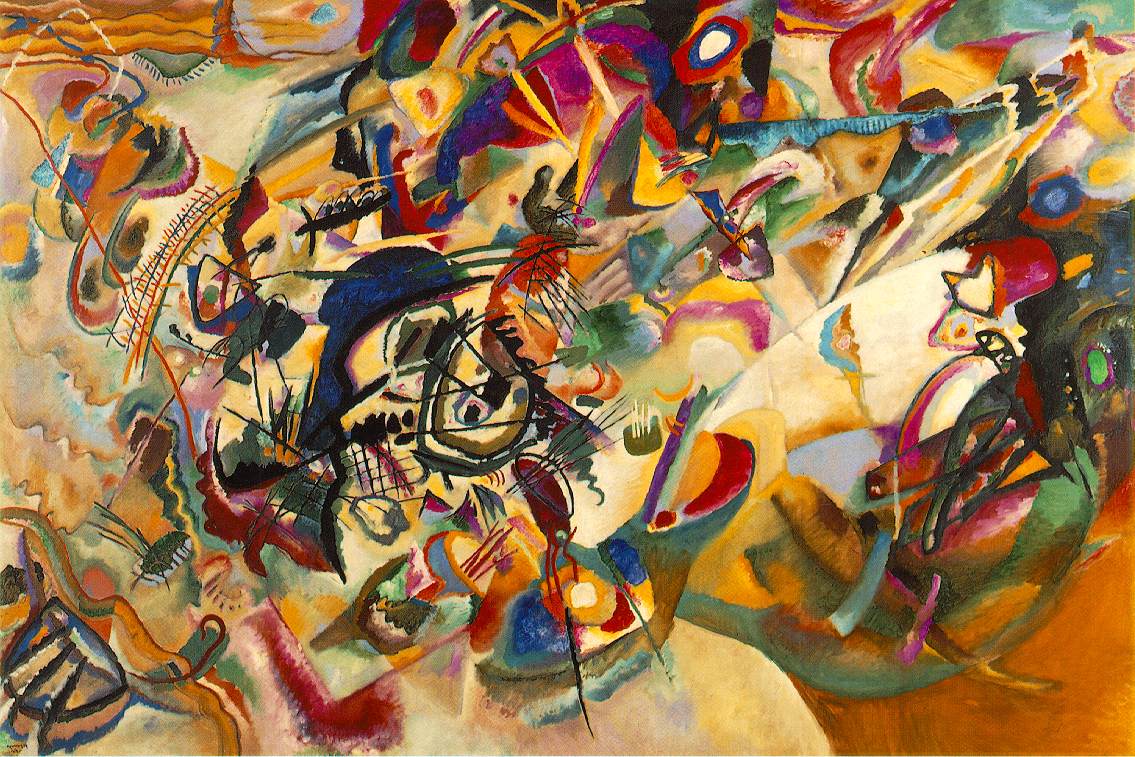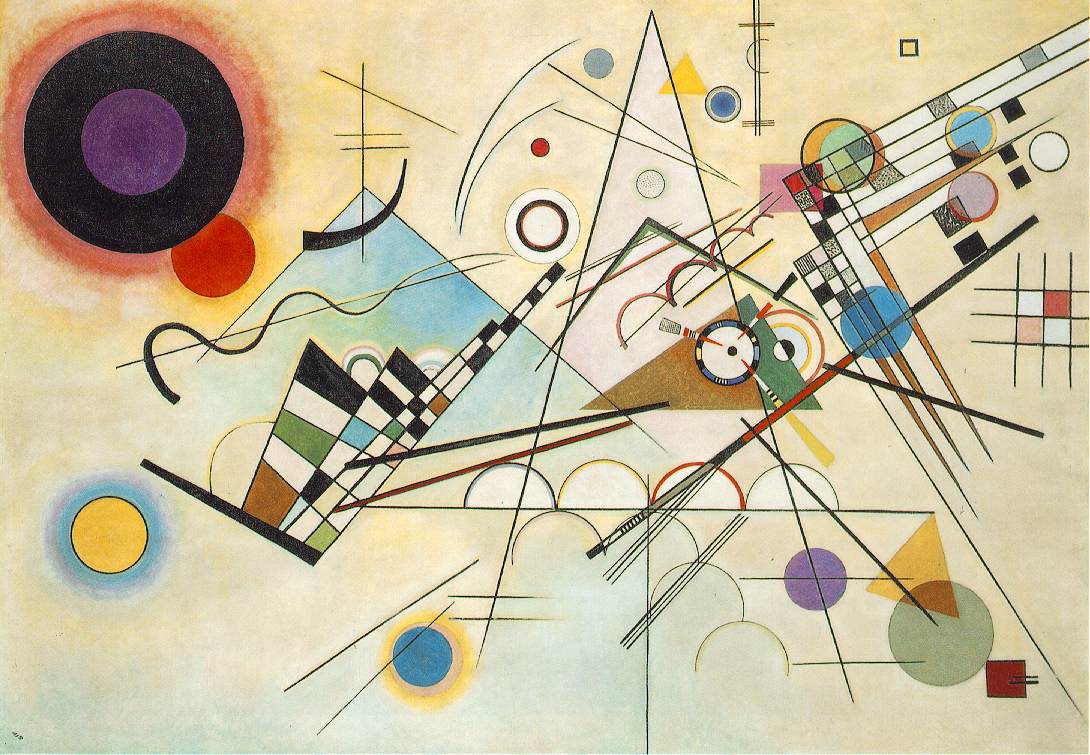 |
| Wassily Kandinsky |
Wassily Kandinsky,
one of the inventers of modern and abstract art, exploited the strong images,
memories and feelings between colour and form to create an artistic experience
that engaged the sight, sound, and emotions of the public. He believed that
abstraction was the possibility for thoughtful, inspiring expressions and that
copying from nature restricted with the process, so he went against it,
creating diverse and deformed art inspired by different aspects of things. He
was highly inspired to create art that communicated a universal sense of spirituality,
modernising a pictorial language that only loosely related to the outside
world, but expressed volumes about the artist’s inner experience. His visual
vocabulary developed through three stages, starting from his early,
representative canvases and their divine symbolism to his energetic operatic
compositions, to his late geometric biomorphic flat planes of colour.
Kandinsky’s ideas and art work inspired many generations of different artists,
from his students at the Bauhaus to the abstract expressionists after World War
2.
 |
| composition VII |
Commonly known as the
highpoint of Kandinsky’s pre- WW1 achievement. This composition of ‘VII’ shows Kandinsky’s rejection of
graphic, symbolic representations through a swirling hurricane of colours and
shapes. The operatic and loud mixing of forms around the canvas demonstrates
Kandinsky’s belief in that painting could induce sounds the way music was
in-titled to mind certain colours and forms; even the title of the composition aligned
with his interest in the twists and twins of the musical with the visual and highlighted
Kandinsky’s non-presentational focus in this work.
As the different
colours and symbols spiral around each other, Kandinsky eliminated traditional
references to depth and placed the simple different abstracted glyphs in order
to communicate deeper themes and emotions common to all cultures and viewers. Anxious
by the theme of disaster and improvement throughout the 1910’s, Kandinsky
formally tied the whirling composition of the painting to the theme of the
cyclical processes of destruction and salvation. Despite the seemingly
non-objective nature of the work, Kandinsky maintained several symbolic
references in this painting. Among the various forms that built Kandinsky’s
visual vocabulary, he painted glyphs of boats with oars, mountains and figures.
However, he did not intend for the viewers to read these symbols literally and
instead imbued his paintings with multiple references to the last judgment, the
deluge, and the Garden of Eden, seemingly all at once.
 Painting was, above
all; deeply spiritual for Kandinsky. He wanted
to carry out deep spirituality and the depth of human emotion through a
universal visual language of abstract forms and colours that transcended
cultural and physical boundaries. Kandinsky viewed non-objective, abstract art
as the ideal visual mode to express the “inner necessity” of the artist and to
convey universal human emotions and ideas. He viewed himself as a fortune-teller
whose mission was to share this ideal with the world for the betterment of
society. He viewed music as the most transcendent form of non-objective art - musicians
could evoke images in listeners’ minds simply with sounds. He strove to produce
similarly object-free, spiritually rich painting that referred to sounds and
emotions through a unity of sensation.
Painting was, above
all; deeply spiritual for Kandinsky. He wanted
to carry out deep spirituality and the depth of human emotion through a
universal visual language of abstract forms and colours that transcended
cultural and physical boundaries. Kandinsky viewed non-objective, abstract art
as the ideal visual mode to express the “inner necessity” of the artist and to
convey universal human emotions and ideas. He viewed himself as a fortune-teller
whose mission was to share this ideal with the world for the betterment of
society. He viewed music as the most transcendent form of non-objective art - musicians
could evoke images in listeners’ minds simply with sounds. He strove to produce
similarly object-free, spiritually rich painting that referred to sounds and
emotions through a unity of sensation.
No comments:
Post a Comment